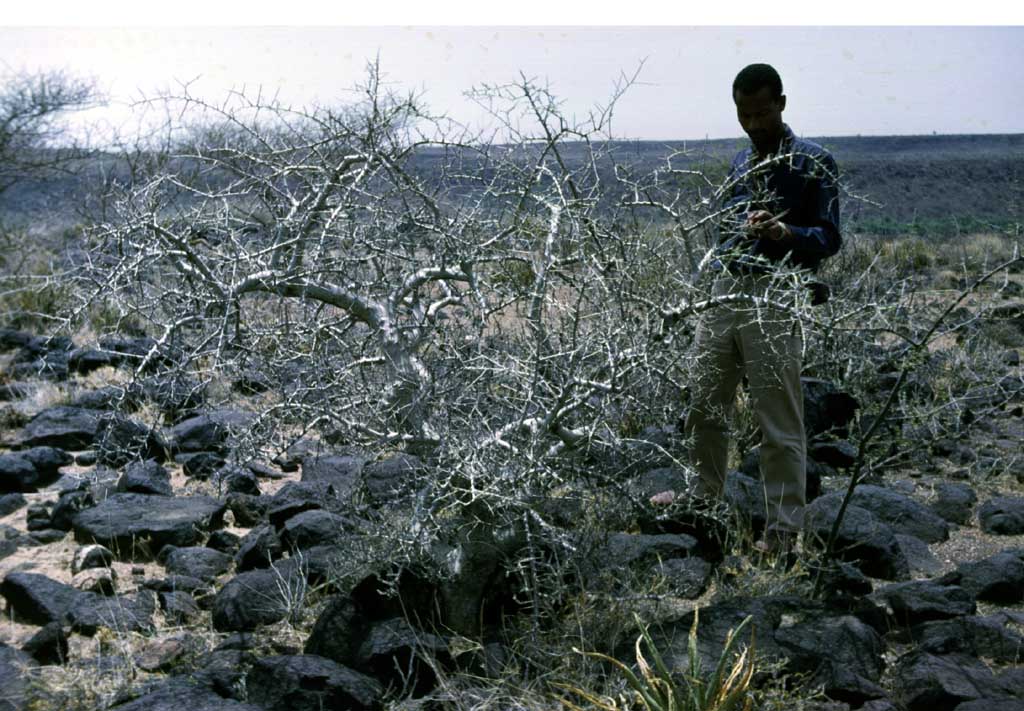Myrrh
Adaptation & Nutrition
Since Myrrh is found in Eastern Mediterrenian areas as well as the Arabian Peninsula (see Habitat/Geography) it has adapted to life in rocky terrain. Since these species have adapted to living in dry environments, water storage in the stems tends to be increased, even thought the species is not considered succulent. The tree itself can grow to be up to 10 feet tall!
Another problem that may arise due to the arid environment has to do with photosynthesis and how the plant obtains its nutrients. The species growing in these harsh conditions are under constant stress, but have adapted to become resistant to extreme environmental conditions and have become well developed physiologically to survive by maintaining their photosynthetic performance. The plants create heat sinks to increase the efficiency of remaining active reaction centers.
